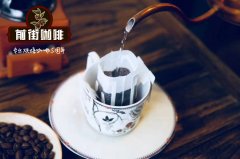Do you know how to preserve coffee beans? how to preserve coffee beans after opening the seal?

Professional coffee knowledge exchange more coffee bean information please follow the coffee workshop (Wechat official account cafe_style)
For regular coffee drinkers, they all like to buy some beans and store them so that they can drink them at any time. So do you know how the coffee beans are kept? How can I preserve the fresh coffee beans I bought? How to preserve the coffee beans after opening in order to keep the flavor of the coffee from dissipating? Let's get to know it!
Coffee beans are preserved:
Like most foods, the fresher you are, the more you can taste the most authentic delicacies. So are coffee beans. The more fresh they are, the better the flavor is. It is not easy to buy high-quality coffee beans, you must not want to drink coffee with a greatly reduced flavor because of poor storage. Coffee beans are very sensitive to the external environment, and the best taste period is not long. How to store coffee beans correctly is a very important issue for people who pursue high-quality coffee.
First of all, let's look at the characteristics of coffee beans. When freshly roasted coffee bean oil is roasted, the surface will be shiny (except for shallow roasted coffee beans and special beans that have been washed with water to remove caffeine), and some reactions continue to take place inside the beans and release carbon dioxide. Fresh coffee beans emit 5-12 liters of carbon dioxide per kilogram. This exhaust phenomenon is one of the keys to tell whether coffee is fresh or not.
Through this continuous changing process, coffee will begin to get better after 48 hours of roasting. It is recommended that the best taste period for coffee is 48 hours after roasting, preferably no more than two weeks.
Elements that affect the freshness of coffee beans
Buying freshly roasted coffee beans every three days is obviously a bit impractical for busy modern people. By preserving the coffee beans in the right way, you can avoid the trouble of purchasing and still drink coffee that completely retains the original flavor.
Roasted coffee beans are most afraid of the following elements: oxygen (air), moisture, light, heat and smell. Oxygen makes coffee tofu bad and bad, water will wash away the aroma oil from the coffee surface, and other elements will interfere with the internal reaction of coffee beans, and finally affect the flavor of coffee.
From this you can infer that the best environment for storing coffee beans is a dry, tasteless place that is isolated from oxygen (air). And among them, isolating oxygen is the most difficult.
Vacuum packing does not mean freshness.
You may think: "what is the difficulty of isolating the air? vacuum packing is fine." Otherwise, if you put it in a sealed coffee can, the oxygen won't get in. "vacuum packaging or fully sealed packaging may be good for other ingredients, but we have to tell you that neither package is suitable for fresh coffee beans.
As we said earlier, coffee beans continue to release a lot of carbon dioxide after roasting, and if the coffee beans in vacuum packaging are fresh, the bag should burst. Therefore, the general practice of manufacturers is to leave the roasted coffee beans for a period of time, wait for the beans to no longer exhaust, and then put into vacuum packaging. In this way, you don't have to worry about exploding, but the coffee beans no longer have the freshest flavor. It is OK for coffee powder to be packed in vacuum, but as we all know, coffee powder itself is no longer the freshest state of coffee.
Sealed packaging is not a good way, sealed packaging will only prevent air from entering, the air contained in the original package can not go out. There is 21% oxygen in the air, which is equivalent to locking oxygen and coffee beans together, which can not achieve the best antiseptic effect.
The best device for preserving coffee: one-way breathable valve
At present, the device on the market that can achieve the best effect of keeping coffee beans fresh is the one-way breathable valve (one-way valve), which was invented by Fres-co Company in Pennsylvania in 1980.
Why? Here to review the simple high school physics, the light gas moves faster, so in the space where there is only one exit, the light gas tends to escape and the heavy gas tends to stay. This is what Graeme's Law (Graham's Law) tells us.
Imagine a bag packed with fresh coffee beans with some remaining space filled with air, which contains 21% oxygen and 78% nitrogen. Carbon dioxide is heavier than both gases, and when coffee beans produce carbon dioxide, they squeeze oxygen and nitrogen out. At this time, if there is an one-way breathable valve, the gas can only go out, not in, and there will be less and less oxygen in the bag over time, which is exactly what we want.
The less oxygen, the better the coffee.
Oxygen is the killer of coffee beans, which is one of the principles that must be considered when selecting and evaluating all kinds of coffee bean storage products. Some people choose to poke a small hole in the bag of coffee beans, which is better than completely sealed, but the amount and speed of oxygen escape is limited, and the hole is a two-way pipe, and the oxygen from the outside will run into the bag. Reducing the amount of air in the package is certainly an option, but only an one-way breather valve can reduce the oxygen content in the coffee bean bag.
In addition, it should be reminded that the packaging with an one-way breathable valve must be sealed to be effective, otherwise oxygen can still get into the bag. Before sealing, you can gently squeeze the air out as much as possible, reduce the gas space in the bag, and have less oxygen to touch the coffee beans.
How to preserve coffee beans
Of course, the one-way breather valve is just the beginning of preserving coffee beans. Here are some questions you may have, hoping to help you enjoy the freshest coffee every day.
Opening and Preservation of Coffee beans
It is generally recommended that the best taste period for coffee beans is two weeks, but if you buy more than two weeks, the best way is to put them in the freezer. We recommend using sealable freezer bags (the less air inside, the better) and store them in small packages, each of which is no more than two weeks. Take out the coffee beans an hour before using them, and then unseal them until deiced to room temperature. There are less water droplets on the surface of coffee beans. Don't forget that moisture can also seriously affect the flavor of coffee beans. Coffee beans that have been taken out of the freezer must not be put back to avoid moisture affecting the taste of coffee during thawing and freezing.
In good storage, coffee beans can be kept fresh in the freezer for two weeks. It can be kept for up to two months, but it is not recommended.
Can I put coffee beans in the freezer?
Coffee beans can not be put in the freezer, only the freezer can keep fresh. The first is that the temperature is not low enough, and the second is that the coffee bean itself can remove the smell, which will absorb the taste of other foods in the refrigerator into the beans, and the final brewed coffee may have the taste of your refrigerator. No storage box can resist the smell, and even coffee powder is not recommended to be put in the freezer.
What is the general principle of coffee bean preservation?
Buy good quality and fresh beans, seal them in dark containers with one-way breathable valves, and place them in a dry, cool, sun-free and steam-free place. The flavor of coffee beans gets better 48 hours after roasting, and the freshest beans are kept at room temperature for two weeks.
After reading it, Dou probably understood it! Coffee both raw and cooked beans have high requirements for preservation, because it is related to the quality of coffee beans, but if it is not preserved in accordance with the method, it is likely to reduce the original quality of coffee, resulting in the final low flavor of coffee, the loss outweighs the gain.
END
Important Notice :
前街咖啡 FrontStreet Coffee has moved to new addredd:
FrontStreet Coffee Address: 315,Donghua East Road,GuangZhou
Tel:020 38364473
- Prev

On the influence of bakers on beans
Professional coffee knowledge exchange more coffee bean information Please follow the coffee workshop (Wechat official account cafe_style) for friends who are not engaged in this profession but just like drinking coffee, it is a bit boring to talk about how to roast beans, but it is easier to choose your favorite coffee beans if you have a concept of roasting beans. 1. Bean roaster's understanding of coffee beans once I ordered a cup of coffee in a self-baking coffee shop.
- Next

Teach you how to make cold extracted coffee coffee beans are recommended to keep cold extracted coffee in cold storage for a few days
Professional coffee knowledge exchange more coffee bean information please follow the coffee workshop (Wechat official account cafe_style) hot summer, go out for 2 minutes and sweat for 5 hours rhythm, this hot sun to no friends of the weather really want not to go out for a lifetime, life in addition to air conditioning, for these coffee
Related
- Beginners will see the "Coffee pull flower" guide!
- What is the difference between ice blog purified milk and ordinary milk coffee?
- Why is the Philippines the largest producer of crops in Liberia?
- For coffee extraction, should the fine powder be retained?
- How does extracted espresso fill pressed powder? How much strength does it take to press the powder?
- How to make jasmine cold extract coffee? Is the jasmine + latte good?
- Will this little toy really make the coffee taste better? How does Lily Drip affect coffee extraction?
- Will the action of slapping the filter cup also affect coffee extraction?
- What's the difference between powder-to-water ratio and powder-to-liquid ratio?
- What is the Ethiopian local species? What does it have to do with Heirloom native species?

